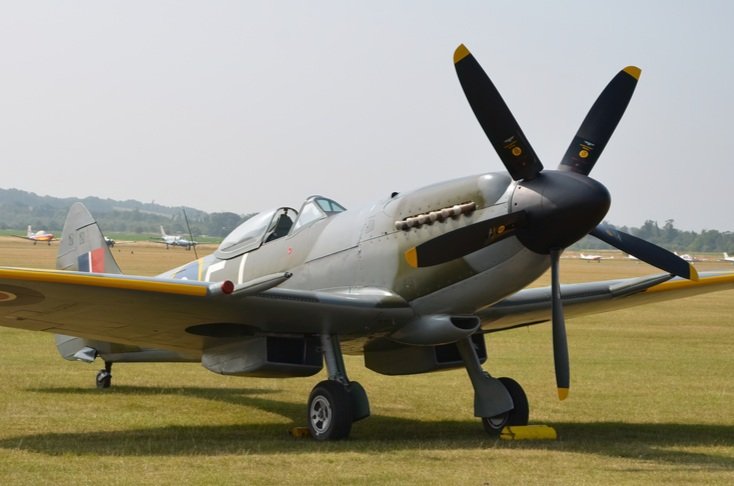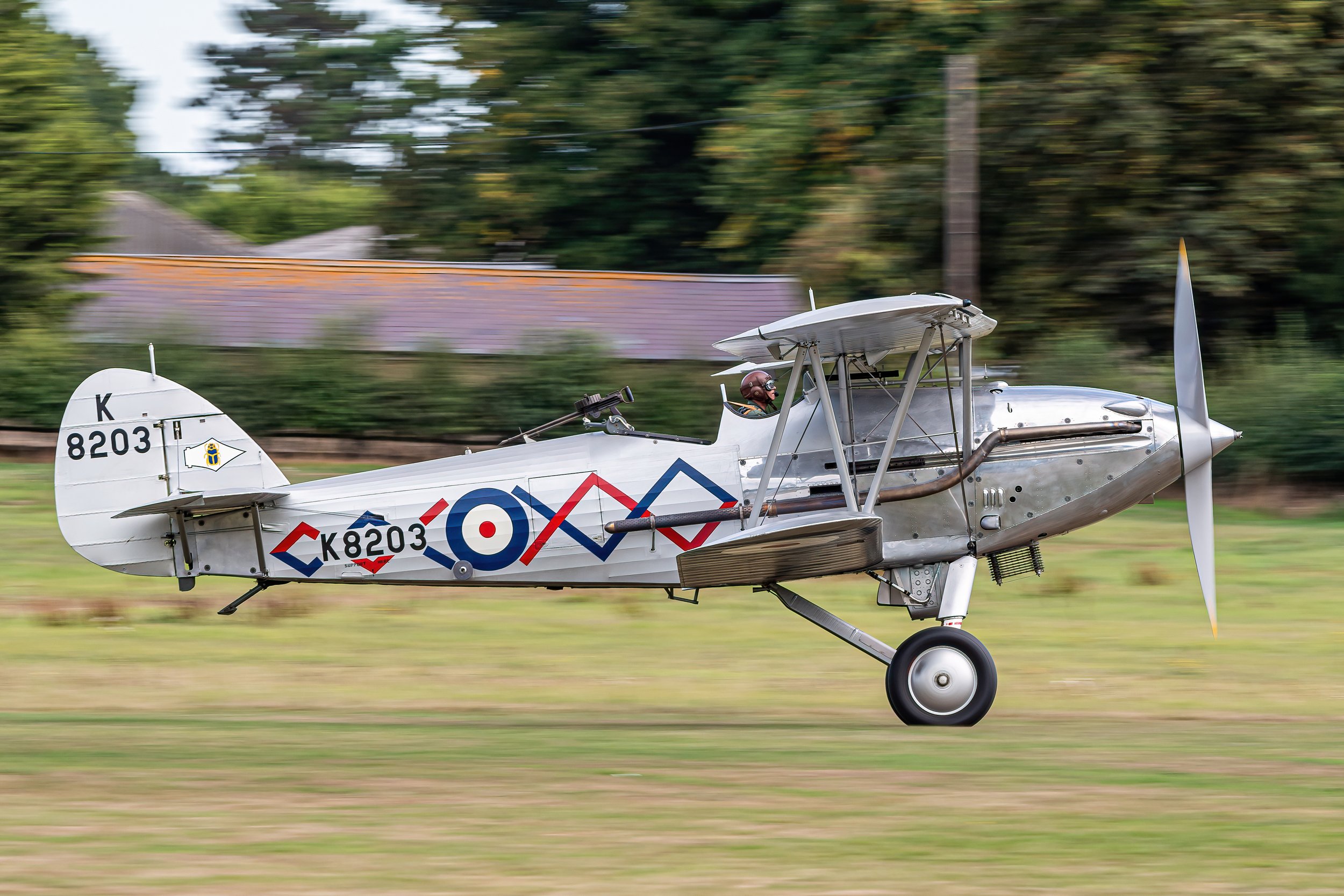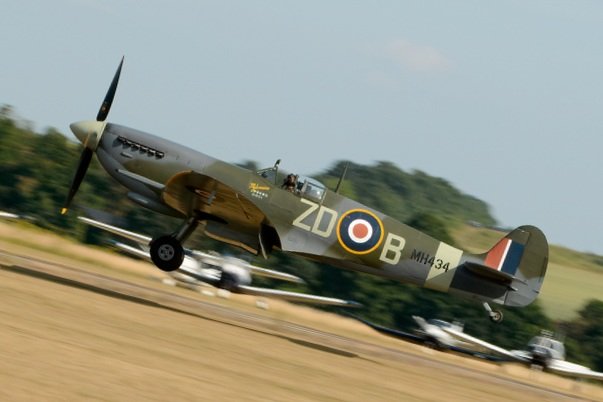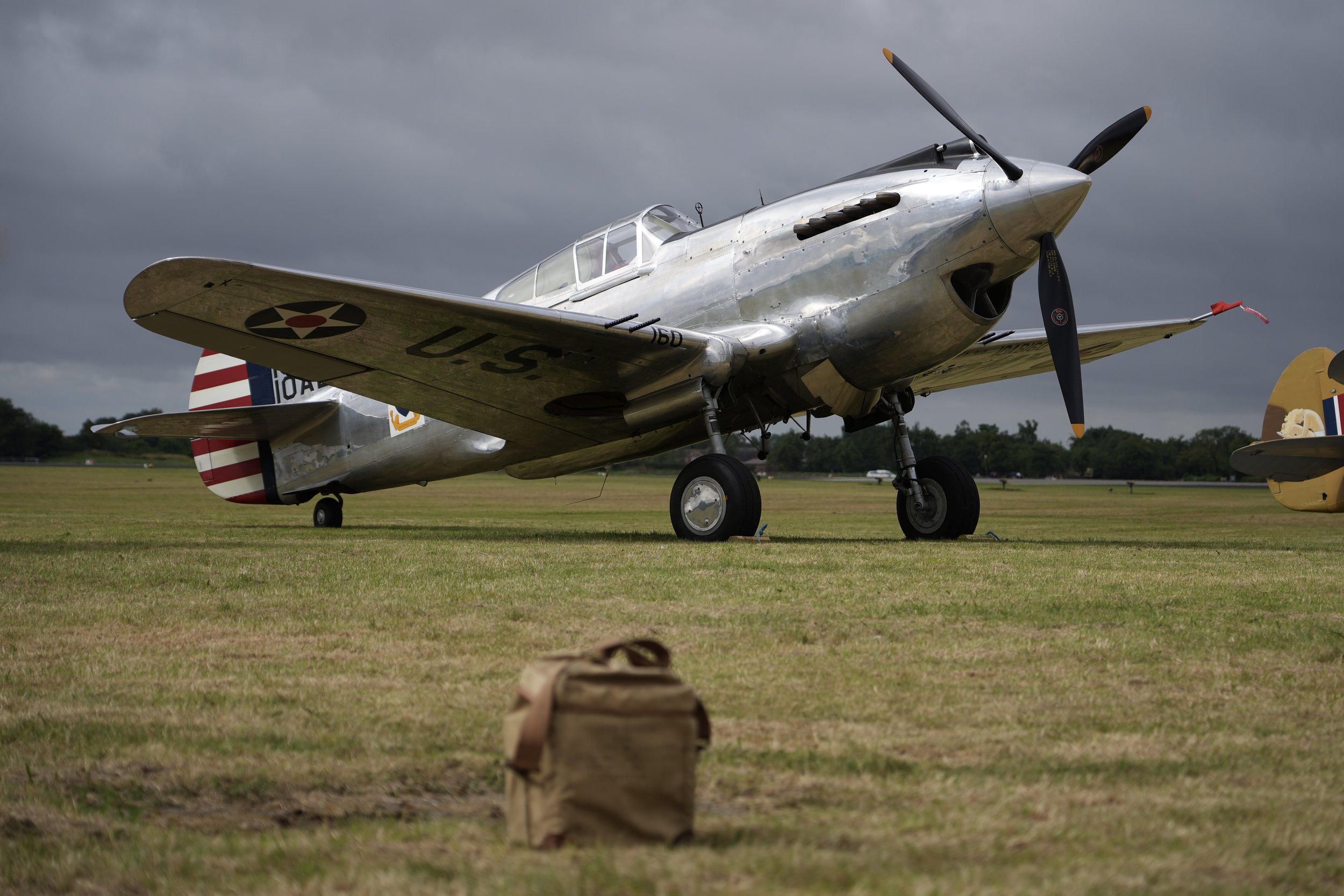Spitfire G-LFIX
Year built
1944
Aircraft
Spitfire T.IX
Base
Sywell Aerodrome
The Grace Spitfire ML407 was originally built at Castle Bromwich in early 1944 as a single-seat fighter and served in the front line of battle throughout the last twelve months of World War II. ML407 flew a total of 176 operational combat sorties amassing an impressive total of 319 combat hours.
Flying Officer Johnnie Houlton DFC who was accredited, whilst flying ML407, with the first enemy aircraft shot down over the Normandy beachhead on 6th June D-Day.
ML407 was converted in 1950 to the two-seat configuration for the Irish Air Corps as an advanced trainer. Design Engineer Nick Grace acquired ML407 in late 1979 from the Strathallan Museum and spent five years meticulously restoring the Spitfire to flying conditions. After Nick Grace’s untimely death in a car accident Carolyn Grace took up the gauntlet of keeping this aircraft flying and now the next generation, being Richard Grace is not only maintaining the aircraft but is flying the aircraft just as his late father had done.
| Back to Top |
Supermarine Spitfire T.IX
The Supermarine Spitfire is a British single-seat fighter aircraft that was used by the Royal Air Force and other Allied countries before, during, and after World War II. Many variants of the Spitfire were built, using several wing configurations, and it was produced in greater numbers than any other British aircraft. It was also the only British fighter produced continuously throughout the war. The Spitfire continues to be popular among enthusiasts; nearly 60 remain airworthy, and many more are static exhibits in aviation museums throughout the world.
The Spitfire was designed as a short-range, high-performance interceptor aircraft by R. J. Mitchell, chief designer at Supermarine Aviation Works, which operated as a subsidiary of Vickers-Armstrong from 1928. Mitchell pushed the Spitfire's distinctive elliptical wing with cutting-edge sunken rivets (designed by Beverley Shenstone) to have the thinnest possible cross-section, helping give the aircraft a higher top speed than several contemporary fighters, including the Hawker Hurricane. Mitchell continued to refine the design until his death in 1937, whereupon his colleague Joseph Smith took over as chief designer, overseeing the Spitfire's development throughout its multitude of variants.
During the Battle of Britain, from July to October 1940, the public perceived the Spitfire to be the main RAF fighter, though the more numerous Hurricane shouldered a greater proportion of the burden against Nazi Germany's air force, the Luftwaffe. However, Spitfire units had a lower attrition rate and a higher victory-to-loss ratio than those flying Hurricanes because of Spitfire's higher performance. During the battle, Spitfires were generally tasked with engaging Luftwaffe fighters—mainly Messerschmitt Bf 109E-series aircraft, which were a close match for them.
After the Battle of Britain, the Spitfire superseded the Hurricane to become the backbone of RAF Fighter Command, and saw action in the European, Mediterranean, Pacific, and South-East Asian theatres. Much loved by its pilots, the Spitfire served in several roles, including interceptor, photo-reconnaissance, fighter-bomber, and trainer, and it continued to serve in these roles until the 1950s. The Seafire was a carrier-based adaptation of the Spitfire that served in the Fleet Air Arm from 1942 through to the mid-1950s. Although the original airframe was designed to be powered by a Rolls-Royce Merlin engine producing 1,030 hp (768 kW), it was strong enough and adaptable enough to use increasingly powerful Merlins and, in later marks, Rolls-Royce Griffon engines producing up to 2,340 hp (1,745 kW). As a result, the Spitfire's performance and capabilities improved over the course of its service life.
| Back to Top |


| Back to Top |

































